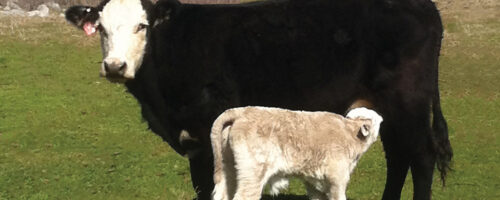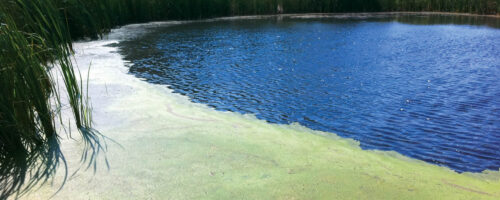A parallel-bar barrier is probably the best option to prevent adult fish passage through spillways. Parallel-bar barriers are especially important for ponds stocked with grass carp. When water flows only a few inches deep through spillways, grass carp tend to leave ponds unless appropriate barriers exist. Properly constructed parallel-bar barriers do not rust out quickly and do not clog regularly with leaves and aquatic vegetation, unlike fish barriers made of poultry wire, net wire, hardware cloth or netting. When constructed and installed properly, parallel-bar barriers restrain grass carp larger than 8 inches, restrain adult game fish, prevent undesirable adult fish from entering ponds, last many decades and require little maintenance.
Panel-type parallel-bar barriers are appropriate for earthen, rock and concrete spillways (Figure 1). Box-type parallel-bar barriers are appropriate for hooded inlet, drop inlet and culvert-type overflow pipe spillways (box-type barriers were addressed in an October 1997 Ag News and Views article, Box-Type Parallel-Bar Barrier. A panel-type barrier is typically placed at the entrance of a flat concrete spillway or placed at the high point (crest) of an earthen or rock spillway.

I am not aware of a commercial source for parallel-bar barriers. Therefore, someone with welding skills is necessary to construct them. There are several options for installing parallel-bar barriers, e.g., dig a level trench across an earthen spillway, link panels together with rods and backfill the trench; set posts, pour a concrete foundation and attach bars; or use brackets to attach a panel to a pre-existing concrete spillway.
The top of a barrier should be higher than peak overflow level, but at least 1 foot lower than the top of a dam. All water flowing through a spillway should pass through the barrier, not over, under or around it. Horizontal bars in barriers should be level (Figure 2), smooth-surfaced, solid metal rods with 3/8- to 5/8-inch diameter, according to strength needed (e.g., people climbing on it, livestock rubbing against it, distance between vertical supports, etc.). Rebar (concrete reinforcing bar) is not a good choice because it does not have a smooth surface and typically is comprised of softer metal, which is not as durable as some other materials such as cold-rolled steel.

Horizontal bars should have a 1-inch space between rods, regardless of rod size. Upright supports should be spaced 3 to 6 feet apart. Vertical and diagonal portions of a fish barrier tend to collect leaves and aquatic vegetation. However, smooth-surfaced, horizontal bars with minimal vertical supports allow most leaves and aquatic vegetation to flush through. Parallel-bar barriers can collect limbs and logs, which may require physical removal. Parallel-bar barriers should be primed and painted, or galvanized, to maximize functional life.
A panel-type barrier on an earthen spillway with livestock access should be fenced from livestock or have a 6- to 12-inch layer of rocks pressed into the ground adjacent to the barrier on each side of it. The fence or rocks prevent cattle trailing along a barrier, which causes erosion under the barrier and could allow adult fish passage or gully formation.
Subpar fish barriers should be avoided because they increase maintenance requirements and might shorten the life-span of the fishery, aquatic vegetation control, spillway and or dam.



Comment